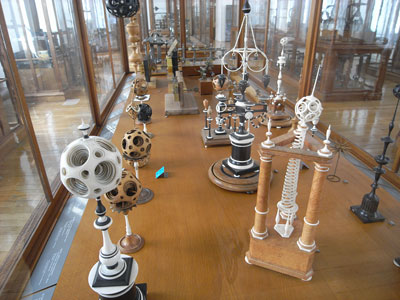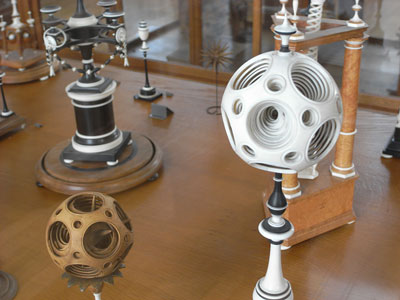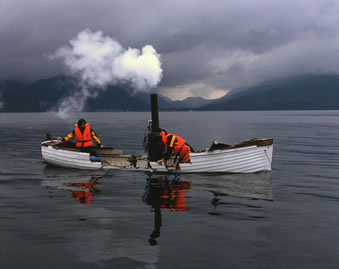Monthly Archives: September 2007
Au revoir Paris
Sad modernism
One of the simple pleasures of wandering around the 11th arrondissement where I have stayed in Paris is the totally unexpected discovery of a number of intriguingly detailed school buildings in the area. From the art deco influenced modernism of the ecole des filles et garcons on Rue des Tallianders to the iconography of the iron-work gates of the ecole on Rue de Marsaille these building possess an aesthetic charm and wit rarely, if ever, present in everyday institutional architecture. So it was with a genuine sense of wonder that I came across the ecole on Rue des Trois Bornes. Tucked away on a tiny side street the school resembled nothing so much as an ocean liner with its porthole windows and curved façade. The nautical theme was a popular variation on the art deco style at the time of its construction in 1932. A theme that is further reinforced by a relief sculpture featuring a stylised representation of a classical sailing vessel that puts one in mind of voyages of Homeric proportions. As fitting a metaphor as any for the education process and indeed life itself. However, it was a sense wonder that quickly dissolved. A small plaque dating from 1991 on the front of the building told of the 1100 children from the 11th arrondissement of Paris that were sent to Nazi death camps in the years between 1942 & 1944. The promise and optimism that I had previously read in the building now replaced by an almost unfathomable sadness.
Fennesz / Atlas / Sound / Vision
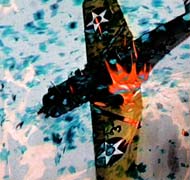

On Friday September 14th I had the good fortune to attend a collaborative performance by musician Christian Fennesz and video artist Charles Atlas. Perched at either side of the large stage of the Pompidou Centre’s main performance hall the pair presented an hour of improvised sound and visuals that were projected on a cinematic scale. This collaborative work eschewed narrative convention for a series of peaks and valleys that played the looping visuals of Atlas against the guitar generated laptop manipulations of Fennesz. This proved to be a pleasingly intense experience. Perhaps, a little too intense for those who were seen to flee the hall mid performance. Fennesz’s music ranged from the oceanic to the threatening with large slabs of digital skree melting into the mix. For the most part he avoided the sense of calmness and dare I say prettiness that has infused his recent recorded works. This was music that relied heavily on the visceral power of volume. Like Fennesz’s music the video of Charles Atlas also employed a strategy of echo and dis-integration. Short loops of archival moving image were juxtaposed and overlayed in a procession of imagery that recalled nothing so much as the endless return of a fevered dream. A smash and grab raid on the archive of the unconscious that drew momentum and intensity from the sound of his collaborator. Loops would disappear to return once more, persistent and fragmented. However, it was the mesh of the two distinct elements that gave the works its power. To claim that the pairing was seamless would be to erase the very real tension that grew from the improvised nature of the performance. A tension that gave birth to a thoroughly entrancing night out.
Théatre du Luxembourg
Those that yearn for the pleasures of pre-cinematic spectacular entertainment in Paris could do a lot worse than take in a show at the marionette theatre in the Luxembourg Gardens. The marionettes are housed in a purpose built theaterette that has been run by the Desarthis family since 1932 . Staring the ever resilient 19th C. character of Guignol the show demands a high level of audience participation to cast its narrative spell. The audience, which consist mostly of overexcited enfants and their minders, writhes and howls as the action unfolds amidst the painted props and rudimentary lighting and sound effects. Within such an atmosphere it easy, momentarily at least, to cast oneself back to a time when the screen was yet to come alive.
Life A User’s Manual
“Then came the period of long walks around Paris. He let himself wander, going wherever the whim took him, plunging into the five-o’clock bustle of office workers. He trailed along shopfronts, went into all the art galleries, walked slowly through the arcades of the IXth arrondissement, stopping at every store. He stared with equal attention at rustic washstands in furniture stores, bedheads and springs in mattress-makers’ windows, artificial wreaths in in undertakers’ shopfronts, curtain rails in haberdasheries, “erotic” playing cards with macromammaried pin-ups in novelty stores (Mann sprich deutsch, English speaken), the yellowing photographs advertising Arts Studios: a moon faced urchin in a vulgarly-cut sailor suit, an ugly boy in a cricket cap, a pug-nosed youth, a rather repellent bulldog type of man by a brand-new car; in a pork-butcher’s Chartres cathedral in lard…”
Gerges Perec, Life A User’s Manual , Collins Harvill, London, 1988, p. 237.
(original title and pub. date: La Vie mode d’emploi, 1970)
The life fantastique of Françoise Barreau
Deep inside the Musée de Arts et Metiérs, nestled amongst the displays dedicated to the development of technology and media is a small collection of the most curious objects. These complex and fantastically shaped creations were produced by a painstaking and largely unknown process on a mechanical lathe in the late 18thC by Françoise Barreau. Barreau a somewhat mysterious figure, considered his work as art, turning the most intricate constructions from a single piece of ivory. How he exactly made these objects is to this day unknown. He was highly secretive and legend has it would only hire deaf mutes as assistants, so as his methods could not be divulged.
Economies: Simon Starling and Michelangelo Antonioni
The recent exhibition Zones de Productivités Concertées at the MAC/VAL in Paris featured a compelling ensemble of works by British born artist Simon Starling. The exhibition, subtitled Enterprises Singuliéres was the third and final installment in a series of group shows that collectively featured 20 “monographic exhibitions” that in some way engage notions of “the economy -its questions, its concepts, its thinking…”
Central to the collection of works exhibited by Starling in the exhibition was a recent film (2006) titled Autoxylopyrocycloboros. A somewhat unwieldy name for such an elegant and conceptually resolved work. The film meticulously shot on super 16mm, which seems to be the contemporary art moving image medium of choice at the moment, features two men in a boat navigating a picturesque mist-shrouded Scottish Loch. I assume that one of the men is the artist. The boat is an old wooden one powered by a fuel burning stove, the two men are hard at work sawing pieces of the boat away which in turn are used to fuel the engine that propels its passage. And so it goes until the boat finally starts taking on water and rather undramatically sinks.
To date Simon Starling’s practice has been pretty much defined by examining or making visible the processes behind the transformation of materials and objects from one state to another. The two other works included in the MAC/VAL show consisted of a series of deadpan photographs of a car that had been geographically relocated and mechanically modified and a collection of coins titled Home-Made 20 pence piece (anon) found in Glasgow on the 8th of January 1996 and reproduced in addition of 27 using the silver from on ladle produced by George Smith and William Fearn, circa 1830.
Within his work things move from one state to another. A boat becomes a boat in motion until the motion itself consumes the very integrity of the craft, the ability of the boat to stay afloat. It is not hard to read the work as a metaphor for the current economic/environmental predicament. One is left wondering at what point the world’s economy is at in its doomed cruise, seems that we are taking on a bit of water at the moment.
Rewatching Michelangelo Antonioni’s Deserto Rosso a few days later in a small cinema on the left bank (there has been a proliferation of tribute screenings in the wake of the director’s death) I was jolted into recognising the very same metaphor at work within the film, albeit alluding to a very different economy.

In Antonioni’s film a group of three couples gather in a secluded wharf side shack for a casual get-together that ambiguously veers towards an orgy. Exactly what transpires is never really divulged by the film’s elliptical narrative space. However, at some point in the proceedings the participants begin to pull planks from the walls of the shack and burn them in the small stove that heats the somewhat dank space. Despite the half-hearted protestations of the shack’s owner the group becomes ever more animated, smashing furniture and dismantling a brightly painted wall to use as fuel for the wood stove.
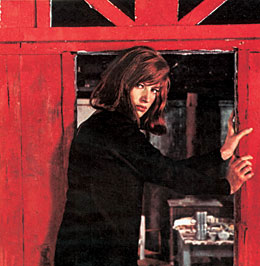
How then do we read these actions? It is tempting to view this spontaneous ritual of destruction in terms of the societal changes that were in 1964 about to sweep through the western world. But if we look closer to the narrative confines of the film itself we can see a much more interesting and complex web of meanings alluded to. A web in which the hinted transgressions and indiscretions of the proceeding scene resurface. A libidinal economy emerges that produces desire through the dismantling of its very supporting structures. An architecture of desire that is only made inhabitable by its own combustion.







